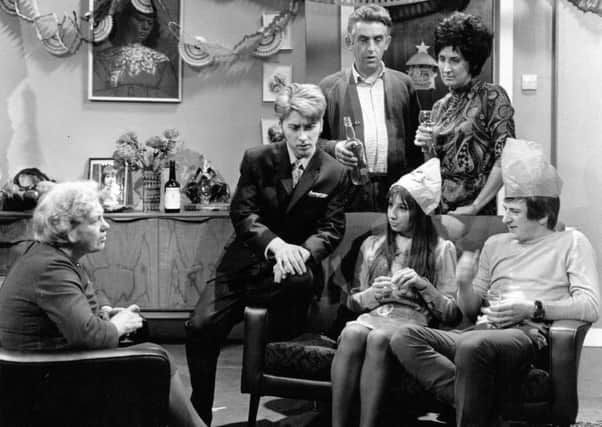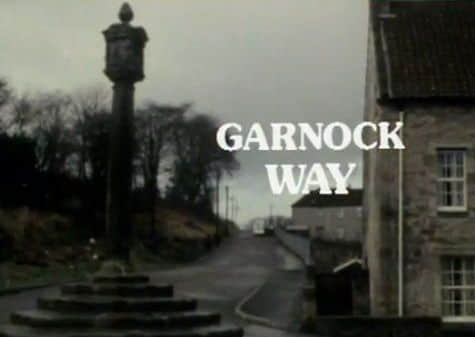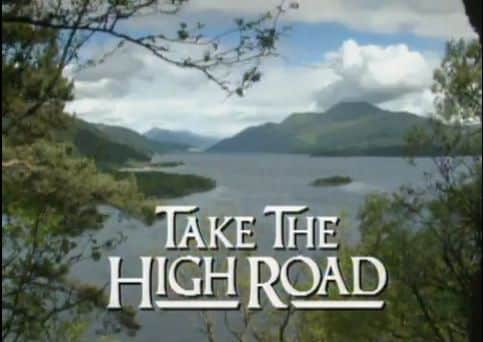Scottish TV soaps through the decades


The story of Scottish soap opera is one of strife and conflict. The all-too-literal rise of the apartment block to take the place of the terraces, the country’s declining manufacturing industries and dispersal of mining communities for the cities informed the darker, emotionally wrought storylines that ran from the 1960s into the 1980s. The traditional beauty of small-town Scotland then became the face of its TV drama later in this period. These more picturesque settings gave Scottish soaps more appeal south of the Border, but the frictions of daily life remained a fixture. In recent years, Scottish soaps have addressed more modern concerns – multi-culturalism, substance abuse and sexuality have sprung up alongside themes of heritage and tradition that international audiences have latched onto.
Lives on the low-lying, fertile plain
The odds of a Gaelic-speaking drama experiencing mainstream success are very low, even in Scotland, yet this is exactly what happened when Machair burst onto our screens in 1992. Written in English, translated into Gaelic and then aired in a primetime Scottish Television slot with English subtitles, Machair was a hit with a Scottish audience where 98 per cent of the population could not speak a word of Gaelic. The stories told of conflicts within island life including issues of inheritance, land ownership and opposition from the young to traditional customs. Until 1996, Machair was shot entirely on location on the Isle of Lewis. Scriptwriter Peter May wrote the first ninety-nine half-hour episodes in the series, garnering extensive praise from Scotland on Sunday’s Kenneth Roy who deemed it “a credit to the company (Scottish Television) and a smack in the face to those of us who were doubtful” of its original prospects for success.


Seeking solace in The Tall Ship
Advertisement
Hide AdThe fictional community of Shieldinch in Glasgow is home to the local pub which reflects the shipbuilding roots of River City. First aired in 2002, BBC Scotland’s soap opera is one of the longest-running soaps still on TV today, with a switch from 30-minute to 60-minute episodes in 2007 confirming the show’s popularity with viewers. Most of the show’s controversial plotlines have revolved around the lives, struggles and loves of the Hamilton, Adams-Mullen and Murdoch families. With many of the show’s disagreements and controversies occuring in the pub, recent storylines have focused upon the destructive impact of drugs and sexual assault upon family and friends.
From the pits to the square
For three years STV ran its hard-hitting drama Garnock Way, which was based on a fictitious mining community between Glasgow and Edinburgh. Only popular with a small number of broadcasters for its intense storylines (including Southern Television and Borders Television), the show was binned in the summer of 1979 to make way for Take The High Road’s more positive portrayal of Scotland. With only four of the show’s 30-minute episodes known to exist, Garnock Way still has a small but devoted following online.


“Scotch lochs, hills and purple heather”
If you’re looking to sell a Scottish TV drama to English networks, what do you do? You certainly give it a name better than “The Glendhu Factor”, which was one of the proposed names for the series. Take The High Road was created to replace the ailing Garnock Way and designed by TV producer and director Haldane Duncan to feature more positive storylines and idyllic Scottish scenery than its forebear. With the fictional village of Glendarroch as its home (and exterior shots filmed in the village of Luss, Loch Lomond), Take The High Road dealt with Protestantism, family conflicts, the arrival of outsiders to small village life and the role of the Lairds in the community. To soften the blow of losing Garnock Way, many of the characters were recycled for the new show. Bill Henderson, who played an alcoholic mechanic in the first show, would later be recast as an alcoholic mechanic in Take The High Road. The series continued to be popular in Scotland even after a mid-life refresh which saw its name shortened and its audience spread to locations as far as Zimbabwe and New Zealand.
Drama in the sky
Scotland’s first-ever native soap opera, High Living, documented the lives of the Crombie family as they moved from a tenement into a new high-rise building known as Caulton Court. With no episodes known to have survived, the TV show has suffered from a lack of digitisation and is therefore less well-known that its successors. Originally, episodes were aired three times a week and lasted 15 minutes apiece; this was later increased to 30 minutes before its demise in 1971. Two scripts, for the first and 137th episode of the show, are known to still be in existence today.